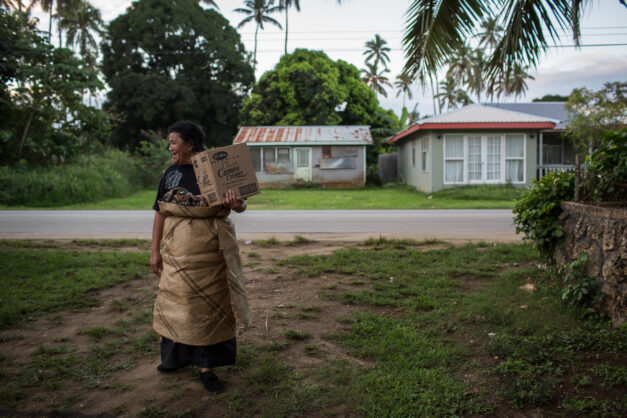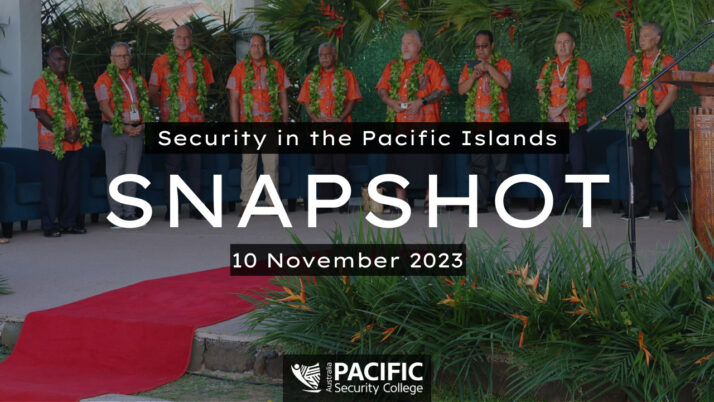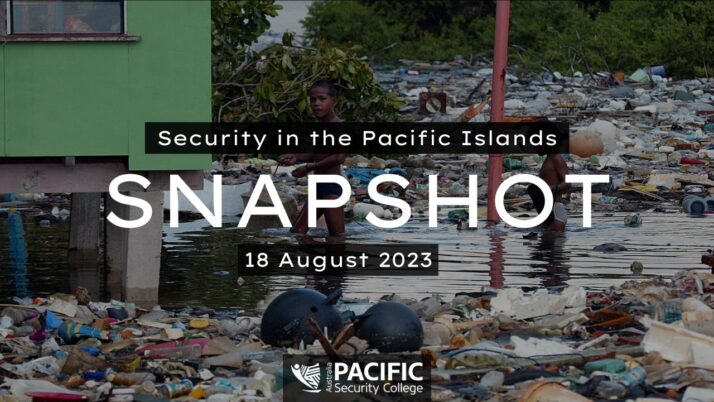Is aid to Tonga reaching those who need it most?

Photo: DFAT
When Tonga experienced a wave of disasters earlier this year, the world rallied in support, but the Tongan government and its international partners must work hard to ensure aid can reach those who need it most, Telusa Fotu Tu’i’onetoa writes.
Tonga is one of the most natural disaster prone nations on earth. From October to April each year, the Pacific Island kingdom is buffeted by frequent cyclones, which damage infrastructure, knock out mobile communication and destroy homes.
However, at the peak of the 2021-22 cyclone season, Tonga’s misfortune doubled. Between 20 December to 11 January, the Hunga Tonga–Hunga Haʻapai volcano experienced a series of massive eruptions, shooting ash 58 kilometres high and causing loud booms, which were heard as far away as Alaska.
The eruption – now known to be the largest the world has seen since Krakatoa in 1883 – subsequently caused a major tsunami, which smashed into Tonga’s coastal areas on 15 January.
Whilst the initial effects of these disasters have now subsided, the damage to people, livelihoods and the environment has been ongoing. The World Bank estimated that the damages amounted to US$90 million with 19,250 people affected, including 10,000 children.
To make matters worse, Tonga detected its first case of COVID-19 in the community only a few days after the eruption, even as volcanic ash was still visible in the air. Behind the headlines was the trauma caused by death and displacement.
These events also led to an overwhelming outpouring of ‘ofa (love), through the mobilisation of resources by Tongans and others across the world. Yet whilst these ‘ofa have been gratefully accepted in ‘the friendly isles’, a number of important questions about the efficacy of this humanitarian assistance have come to the fore.
Not least amongst these have been concerns about the ability of the stretched Tongan government to absorb, coordinate and distribute assistance to its citizens.
The primairy providers of aid to Tonga after the disaster were Australia and New Zealand, who delivered emergency supplies including hygiene kits, kitchen kits and other essential supplies. This came in addition to the millions already committed to Tonga in development programs.
The Government of Tonga also received US$8 million in emergency funding from the World Bank to support response and recovery efforts. Other bilateral partners such as the United Kingdom, Japan, China and France also showed their ‘ofa by sharing their expertise in different areas to support Tonga in the aftermath of the disaster.
Meanwhile, non-government organisations (NGOs) and their overseas partners have helped Tonga in the emergency response phase. The Church Leaders Forum and other leading NGOs targeted an area of care often neglected by aid providers in post-disaster assistance – psycho-social support.
The aim of such programs is to not only provide the material building blocks for recovery, but also to help victims share experiences and recover a sense of normalcy in the wake of the tragedy.
However, whilst much of this assistance has helped Tongans rebuild their lives, some may have languished in a state of bureaucratic and logistical limbo. At recent regional security conference, some people conveyed their anecdotal concerns about containers of aid being left at the docks.
As a developing nation, the capacity of the Tongan government to properly manage the large amounts of aid being delivered is limited. This is in large part due to logistical and bureaucratic capacity constraints, making coordination difficult – especially in times of crisis. This can mean that it is unclear what is needed where, making it difficult to distribute critical resources to the people who need them most.
As such, it is crucial that development partners work in concert with the Tongan government and communities to ensure that distribution is coordinated effectively and consistently across all levels.
With the next cyclone season looming, it’s the Tongan government and its international partners need to address these capacity issues now. This is no easy task, but with the frequency and severity of disasters set to increase as global temperatures increase and sea levels rise, it is vital to the kingdom’s future. Malo e ‘ofa!
Telusa Fotu Tu’i’onetoa
More Stories

Security Snapshot - 10 Nov 2023
Pacific Security Snapshot | 10 November 2023
The security stories shaping the region 52nd Pacific Islands Forum Leaders’ Meeting in Cook Islands The South Pacific Connect Initiative Australia-United States commitments to Pacific finance and infrastructure Lowy Institute 2023 Pacific Aid Map Tropical Cyclone Lola hits Vanuatu and Solomon Islands Parties to the Nauru Agreement endorse the Kirimati Communique Tonga prepares for El…

Security Snapshot - 18 Aug 2023
Pacific Security Snapshot | 18 August 2023
The security stories shaping the region ➣ Pacific Resilience Facility endorsed at the Forum Economic Ministers Meeting ➣ The Pacific Climate Security Assessment Guide ➣ French President Macron visits Papua New Guinea and Vanuatu ➣ US Secretary of State and Secretary of Defence in the Pacific ➣ Bougainville eruption leaves 8,000 displaced Climate Security Ministers…






